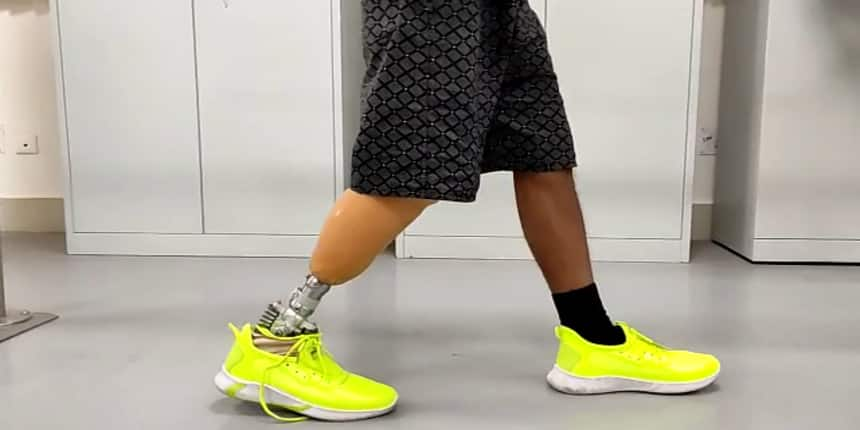IIT Guwahati develops affordable prosthetic leg for Indian conditions
Abhiraj P | June 13, 2022 | 05:05 PM IST | 2 mins read
Prosthetic leg developed by IIT Guwahati is claimed to be suitable for difficult terrain, Indian locomotion needs like cross-legged sitting and deep squatting.

NEW DELHI: Researchers at the Indian Institute of Technology (IIT) Guwahati have developed a prosthetic leg for Indian conditions which is suitable for difficult terrain and supports Indian locomotion needs like cross-legged sitting and deep squatting. The IIT Guwahati prosthetic leg is adjustable for different age groups and for multiple stages of prosthesis use, claims the institute.
This research for the development of prosthetic legs for Indian conditions at IIT Guwahati received funding from the Union education ministry and the biotechnology department. The researchers collaborated with 151 Army Base Hospital, Guwahati, Tolaram Bafna Kamrup District Civil Hospital, Guwahati, Guwahati Neurological Research Centre (GNRC), North Guwahati, and North Eastern Indira Gandhi Regional Institute of Health and Medical Sciences (NEIGHRIMS), Shillong, for the development of the prosthetic leg.
To enable highly functional mobility, expensive devices have to be used. Affordable prosthetics in the market come with limitations in movement, and there are not many prosthetics in the market suited for Indian conditions and lifestyles. The research to develop such prosthetics is being led by S Kanagaraj, a professor at the mechanical engineering department of IIT Guwahati. Prototypes of the prosthetic leg models developed by the research team are undergoing trials as of now.
Also read | CA Foundation, Inter, Final: What do ICAI’s syllabus reforms mean for students?
“The knee joint developed by our team has a spring-assisted deep squat mechanism, which helps to use Indian toilet system more comfortably; the knee rotating mechanism helps to have cross legged sitting; the locking mechanism helps to reduce the fear of falling of patients while walking in unknown terrain; adjustable link length in a knee helps to have either more stability or easy flexing depending on age and requirement of the patients. Overall, the knee joint is designed to meet the Indian lifestyle which other products fail to fulfil,” said Kanagaraj.
Also read | Summer vacation extended in West Bengal till June 26 due to severe heatwave
Follow us for the latest education news on colleges and universities, admission, courses, exams, research, education policies, study abroad and more..
To get in touch, write to us at news@careers360.com.